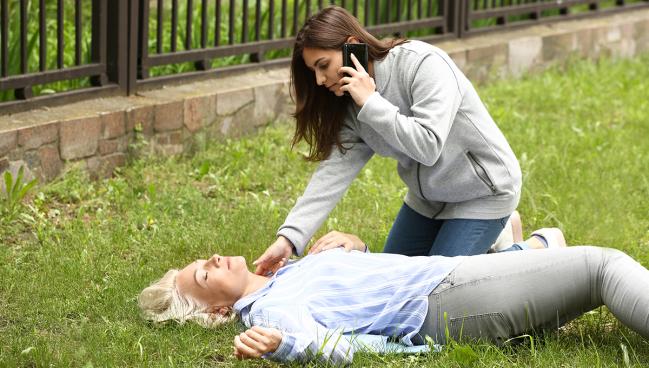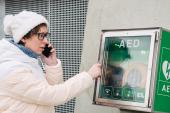Bystander CPR Less Likely for Women Regardless of Neighborhood’s Racial/Ethnic Mix
Earlier OHCA data have shown demographic differences, like less CPR in Black areas, but this analysis confirms a broader problem.

Women who have an out-of-hospital cardiac arrest (OHCA) are less likely than men to receive bystander CPR and automated external defibrillator (AED) application regardless of the racial and ethnic makeup of the neighborhood where the event took place, according to observational US data.
How often CPR is performed and how likely people are to live after OHCA are known to vary by neighborhood makeup, with previous studies showing low bystander CPR rates in predominantly Black neighborhoods and low survival after OHCA in predominantly Hispanic neighborhoods. Women, more generally, have been reported to receive CPR, as well as other lifesaving therapies, less often than men after OHCA. Calls have been made for greater diversity in CPR training manikins, for example, for “womanikins,” and mobile applications have been created to foster equity, yet gaps in care gap remain.
Lead author Audrey Blewer, PhD, MPH (Duke University, Durham, NC), told TCTMD that this study’s findings, which speak to the intersection of race/ethnicity and sex, indicate an “across-the-board problem” regarding CPR and AED use for women no matter where their event takes place.
A Universal Problem
For the study, published online last week in the Journal of the American Heart Association, Blewer and colleagues included data from 309,662 out-of-hospital cardiac arrests (mean age 62 years; 36% women) from the US-based Cardiac Arrest Registry to Enhance Survival (CARES) between 2013 and 2019. Bystander CPR and AED application in public locations each were noted in 39% of events, and only 10% of those who experienced OHCA survived to hospital discharge. More than half of events took place in predominantly white neighborhoods, while 20% and 19% occurred in predominantly Black and predominantly Hispanic neighborhoods, respectively.
Overall, women who had an event in public were significantly less likely than men to receive bystander CPR (43% vs 47%; OR 0.86; 95% CI 0.82-0.89), no matter whether the event took place in a predominantly Black, Hispanic, or white neighborhood. Fewer women also received an AED (36% vs 40%; P < 0.01).
Similar findings were seen in predominantly Black neighborhoods for both bystander CPR (adjusted OR 0.87; 95% CI 0.76-0.98) and AED use (adjusted OR 0.88; 95% CI 0.78-0.99) as well as predominantly Hispanic neighborhoods (bystander CPR adjusted OR 0.83; 95% CI 0.73-0.96; AED application adjusted OR 0.74; 95% CI 0.64-0.87).
For OHCA at home, there were no differences seen between men and women for CPR or AED use regardless of the racial/ethnic makeup of the neighborhood.
The biggest take-home message is that anybody can save a life and it's better to do something than to do nothing. Audrey Blewer
The study confirms that problems with CPR administration and AED use are universal, Blewer said. “When it comes to survival from out-of-hospital cardiac arrest, we know that getting hands on chest, doing prompt delivery of CPR, is important but also having access to that AED [matters],” she said.
Given the consistency they saw, a broader focus on “education, messaging, and just getting more people to feel comfortable with doing CPR” is warranted, Blewer said.
“The biggest take-home message is that anybody can save a life and it's better to do something than to do nothing,” she continued. “To act just involves three simple steps: calling 911, pushing hard and fast in the center of the victim's chest, and using an AED if available. So if we can get more people doing that, we have the potential to save more lives.”
Additionally, like others before them, the findings highlight some potential opportunities for amending the CPR training process to improve rates of CPR for women with OHCA, she said. Specifically, prior survey data have shown that people have concerns with performing CPR on women given the differences in female anatomy, whether it’s perceived frailty, fear of injury, or worry over perceived inappropriate touching.
“Over the past decades, most times when people learn and get trained in CPR, they are doing CPR on a manikin that has primarily the male anatomy instead of the female anatomy,” Blewer noted. “There is opportunity to think about how we are addressing the training, how we are addressing the curriculum, how we are communicating to the lay public, and taking steps to really try to address this issue through a training and education perspective.”
Education is the key to addressing many of these “concerns, fears, and potential biases,” she added. “We also recognize in the medical literature that for behavior change to happen, it's not just education. There are other things that need to happen as well but, education and training is good first step.”
The investigators point to additional future research opportunities using geospatial mapping to target high-risk neighborhoods with CPR training and testing whether these tools improve CPR rates, especially for women. Also, they write, the bystander CPR curriculum could potentially be modified to be “linguistically appropriate and culturally competent.”
Yael L. Maxwell is Senior Medical Journalist for TCTMD and Section Editor of TCTMD's Fellows Forum. She served as the inaugural…
Read Full BioSources
Blewer AL, Starks MA, Malta-Hansen C, et al. Sex differences in receipt of bystander cardiopulmonary resuscitation considering neighborhood racial and ethnic composition. J Am Heart Assoc. 2024;13:e031113.
Disclosures
- Blewer is funded as a Building Interdisciplinary Research Careers in Women’s Health scholar through a National Institutes of Health National Institute of Arthritis and Musculoskeletal and Skin Diseases grant.





Comments